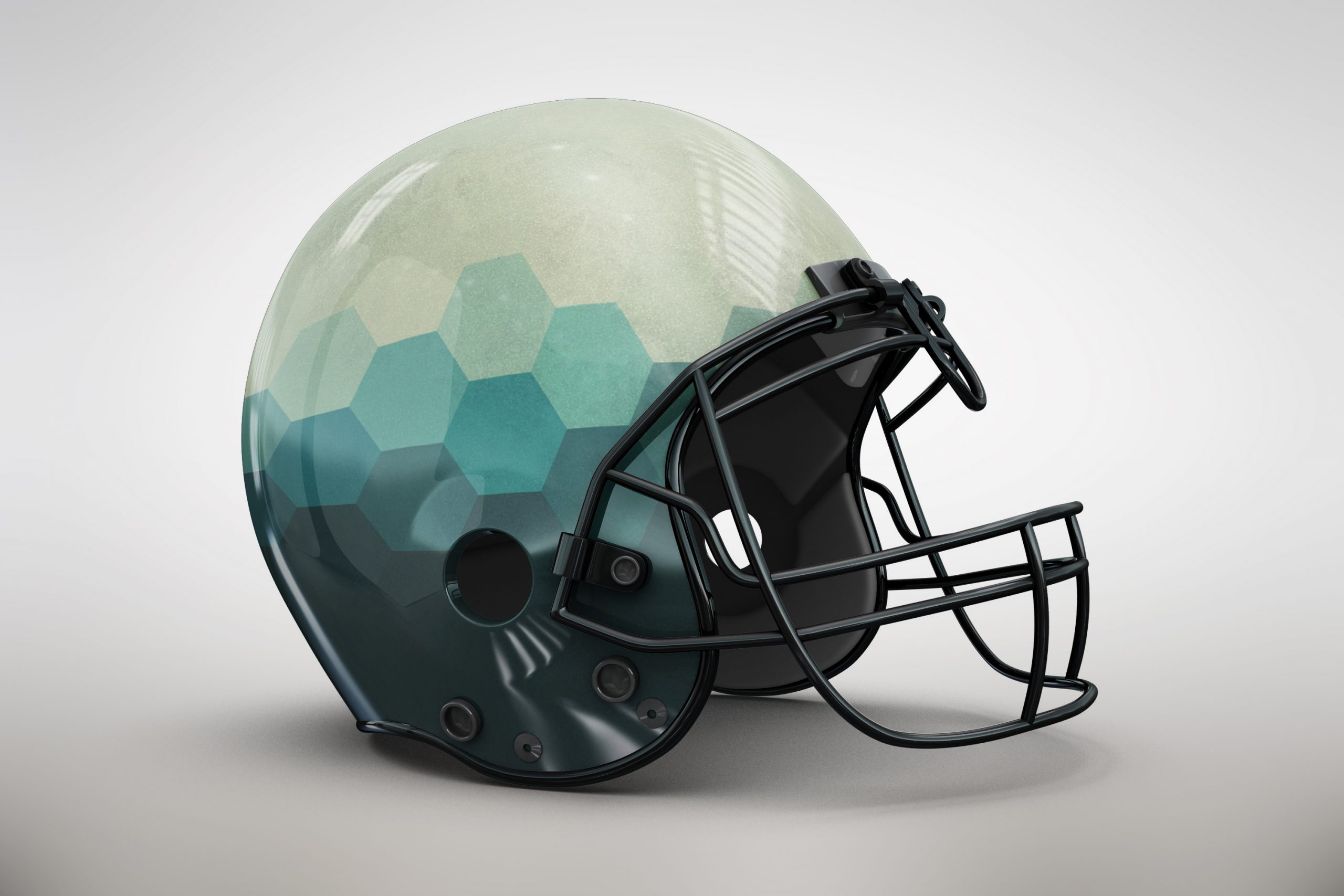

Every year, millions of people in the United States get concussed while participating in sports. Players in sports such as American football are particularly vulnerable to injuries that can have terrible long-term implications. Stanford University researchers, in collaboration with the business Savior Brain, have developed one potential method of safeguarding players: a football helmet with liquid shock absorbers that could minimize the impact of strikes to the head by one-third.
“Most of the members of our team have a personal connection to traumatic brain injury and we care deeply about ensuring long-term athlete brain health,” said Nicholas Cecchi, a Ph.D. candidate at Stanford University and lead author of the study in Frontiers in Bioengineering and Biotechnology. Concussion and repeated head impacts are still a major problem in contact sports, and we believe that improved helmet technology can play an important role in reducing the risk of brain injury.
HARM abatement
Previous study by Stanford University’s Camarillo Lab revealed that liquid shock absorbers could improve protection in sports helmets. To investigate this, the team created a finite element model of an American football helmet with 21 liquid shock absorbers, which engineers use to simulate performance before production. This helmet was tested against simulations of the National Football League’s (NFL) helmet performance evaluation methodology, and its performance was compared to that of four current helmets.
Lower velocity hits were added to the evaluation methodology due to accumulating evidence that the cumulative effect of impacts that do not induce diagnosed concussions might have substantial health repercussions. They assessed the head kinematics for each hit to generate a Head Accelerate Response Metric (HARM) score, which is intended to assess helmet performance in the event of an impact. The kinematics were also entered into a head and brain model to calculate the strain on the brain.
33% reduction in impact
The findings indicated that the helmet with liquid shock absorbers might greatly lower the impact intensity and strain on the brain produced by head hits, potentially significantly reducing injuries. The helmet with liquid shock absorbers outperformed the conventional helmet types, producing the lowest HARM value in 33 of 36 distinct impact scenarios tested, with an average score reduction of a third.
The liquid helmet also received the highest “Helmet Performance Score,” a metric used in the NFL’s yearly helmet safety rankings that includes a weighting for how well a helmet protects against hits to various parts of the head. The’side upper’ portion of the helmet is the most heavily weighted because impacts here are most likely to cause concussions: the helmet with liquid shock absorbers reduced the HARM score in this area by 39-50% across all impact velocities without compromising protection in other areas of the helmet.
“The liquid technology offered an average improvement of over 30% for both low and high velocities,” said Dr. Yuzhe Liu, corresponding author, who completed the work as a postdoctoral scholar at Stanford University. “It can dramatically reduce the loading on the brain that is experienced during all kinds of American football impacts.”
The team wants to dramatically modify the model to better protect players, such as by making changes to the facemask and chinstrap. They also intend to turn the model into a physical helmet that can be evaluated in real-world situations, as well as to build comparable helmets for other sports in the future. However, different levels of play or sports may require different metrics and design modifications.
“The next step for our team is to translate the computer model to a physical prototype,” said Cecchi. “After successfully completing that, we would also be interested in conducting human studies that could demonstrate either a reduction in concussion incidence or an attenuation of impact severity for sub-concussive impacts. We have plans to expand our implementation of liquid shock absorbers to more areas of the helmet, and more helmeted applications, to further improve brain safety for a wide variety of populations.”
more recommended stories
 Phage Therapy Study Reveals RNA-Based Infection Control
Phage Therapy Study Reveals RNA-Based Infection ControlKey Takeaways (Quick Summary) Researchers uncovered.
 Safer Allogeneic Stem Cell Transplants with Treg Therapy
Safer Allogeneic Stem Cell Transplants with Treg TherapyA new preclinical study from the.
 AI in Emergency Medicine and Clinician Decision Accuracy
AI in Emergency Medicine and Clinician Decision AccuracyEmergency teams rely on rapid, accurate.
 Innovative AI Boosts Epilepsy Seizure Prediction by 44%
Innovative AI Boosts Epilepsy Seizure Prediction by 44%Transforming Seizure Prediction in Epilepsy Seizure.
 Hypnosis Boosts NIV Tolerance in Respiratory Failure
Hypnosis Boosts NIV Tolerance in Respiratory FailureA New Approach: Hypnosis Improves NIV.
 Bee-Sting Microneedle Patch for Painless Drug Delivery
Bee-Sting Microneedle Patch for Painless Drug DeliveryMicroneedle Patch: A Pain-Free Alternative for.
 AI Reshapes Anticoagulation in Atrial Fibrillation Care
AI Reshapes Anticoagulation in Atrial Fibrillation CareUnderstanding the Challenge of Atrial Fibrillation.
 Hemoglobin as Brain Antioxidant in Neurodegenerative Disease
Hemoglobin as Brain Antioxidant in Neurodegenerative DiseaseUncovering the Brain’s Own Defense Against.
 Global Data Resource for Progressive MS Research (Multiple Sclerosis)
Global Data Resource for Progressive MS Research (Multiple Sclerosis)The International Progressive MS Alliance has.
 AI Diabetes Risk Detection: Early T2D Prediction
AI Diabetes Risk Detection: Early T2D PredictionA new frontier in early diabetes.

Leave a Comment